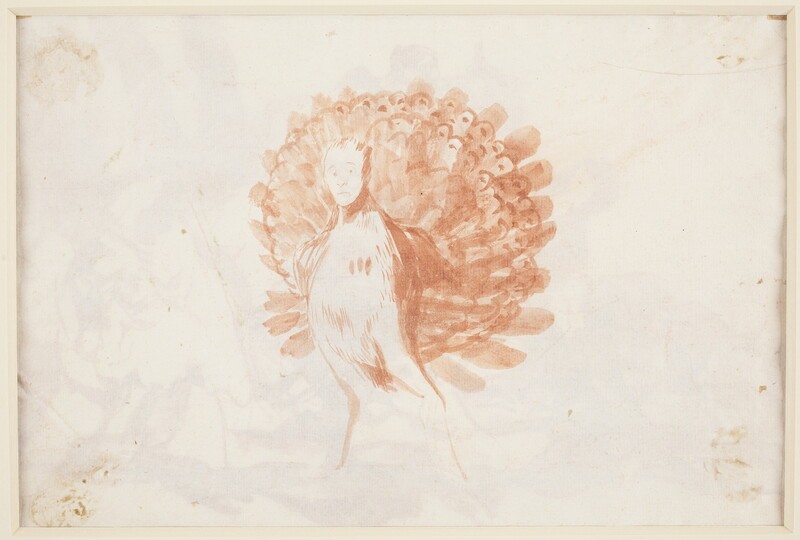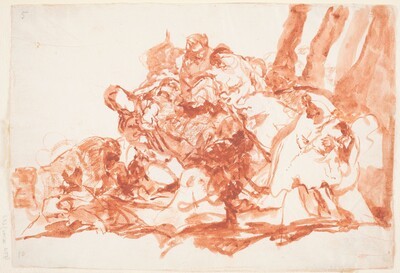- Cronología
- Ca. 1814
- Ubicación
- The Prado National Museum. Madrid, Madrid, Spain
- Dimensiones
- 232 x 332 mm
- Técnica y soporte
- Reconocimiento de la autoría de Goya
- Documented work
- Titular
- El Prado National Museum
- Ficha: realización/revisión
- 19 Aug 2021 / 13 Apr 2023
- Inventario
- D4349 v.
Stamp of the Prado Museum (stamped in purple ink, top right)
MP Inventario DIBUJOS no 457 (stamped. Reverse, upper right-hand corner)
no 9 grabada (in pencil. Reverse, top left-hand corner)
Watermark: "MANUEL SERRA" (right half)
The drawing passed by inheritance in 1828 to Javier Goya, the painter's son, and in 1854 to Mariano Goya y Goicoechea, the artist's grandson. It was subsequently owned by Valentín Carderera (ca. 1861) and Mariano Carderera (ca. 1880). In 1886 it was acquired from Mariano Carderera by the Directorate General of Public Instruction and was assigned to the Prado Museum, where it entered on 12 November 1886.
A note that does not correspond to any of the prints in the engraved series of the Follies, but which can be found on the back of General folly (preparatory drawing), a preparatory study for one of them.
The curious drawing depicts a peacock with a human head. The plumage of the splendid tail has first been outlined and then finished off with a few quick strokes. The legs of the strange bird seem unfinished, and all the attention is focused on the perplexed face of the curious creature. Gassier points, without confirming it, to the myth that identifies this drawing as a caricature of the Duke of Wellington, with whom, according to Gassier, the Aragonese painter did not agree when he portrayed him in 1812.
-
Los dibujos de Goya, 2 vols.MadridAmigos del Museo del Prado1954s. p., cat. 454
-
Vie et ouvre de Francisco de GoyaParísOffice du livre1970p. 327, cat. 1613
-
Dibujos de Goya, 2 volsBarcelonaNoguer1975pp. 474-475, cat. 311

